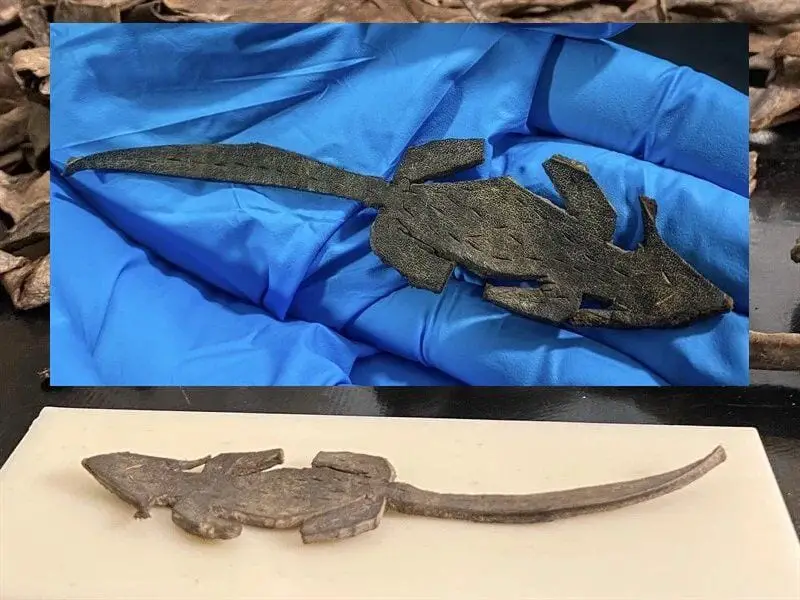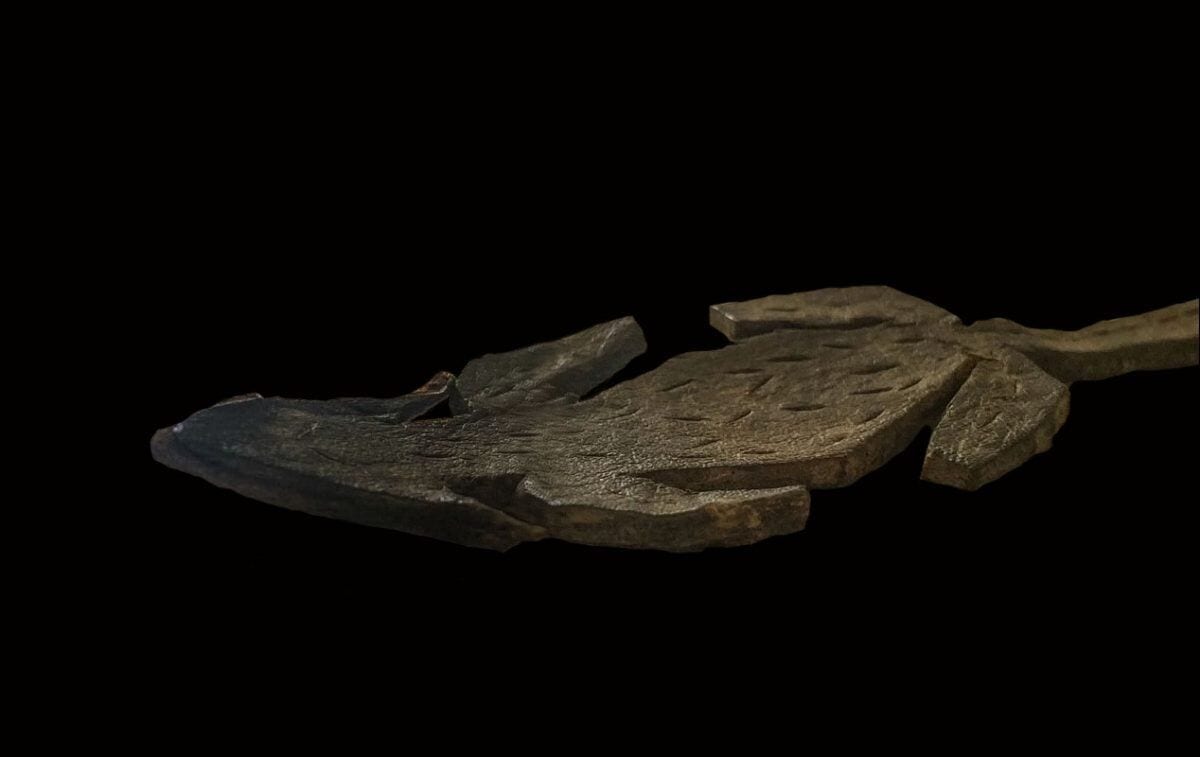Archaeologists excavating at the Roman Fort of Vindolanda near Hadrian’s Wall in Northumberland, England have discovered a unique leather toy mouse dating from AD 105-130.
Vindolanda (translated as “white field” or “white moor”) was a Roman auxiliary fort, located on the fringes of the Roman Empire in the province of Britannia. Its position guarded a major Roman highway called the Stanegate, just south of Hadrian’s Wall and the frontier into Caledonia. The garrison consisted of infantry or cavalry auxilia, not components of Roman legions.
During its occupation, no less than nine Roman forts were built in situ of timber or stone, creating one of the most complex archaeological sites in Britain and leaving a unique cultural legacy of frontier life.
Vindolanda is well known for the large amounts of organic Roman objects discovered in situ, which includes the largest collection of leather boots and shoes from the Roman period in Britain. Excavations have also revealed substantial amounts of tent panels, decorative embellishments, horse geat, offcuts, and scraps. To date, archaeologists have discovered over 7,000 organic objects that can take years to examine post-excavation.
During lockdown, curatorial staff at Vindolanda have been taking a closer look at the vast reserve collection of leather. Whilst sifting through bags of offcuts and scraps, some of which contain hundreds of pieces, they found a piece of leather that had been fashioned into a small animal, resembling a mouse.

The mouse measures 12.2cm long and 2.6cm wide and has markings across the body to indicate the fur and eyes. The bag of scrap leather in which it was hidden inside was uncovered in 1993 during an excavation of a room inside the period IV/V Commanding Officer’s Residence, when the first cohort of Tungrains (from modern-day Belgium) were stationed at the site. This dates the leather to c. AD105-130. It is thought it may have been a child’s toy, or possibly even used as a practical joke.
The Trust’s Curator, Barbara Birley said “One of the most wonderful things about the Vindolanda collection is that we never know what we are going to find next. Even though we have had to delay the start of our 2020 excavations this year we see the collection still has hidden treasures to be revealed. Although we have a significant amount of evidence of children at Vindolanda we have very few toys, it would be wonderful if this little mouse had been a toy and a source of entertainment for a child here on the northern frontier”.
Real mice were indeed everywhere in ancient Vindolanda, in every fort, likely to be present in all houses and spaces and would have been a consistent pest and companion to the people who lived there. When the Vindolanda granaries were excavated in 2008, the bones from thousands of dead mice were uncovered below the floors of the building, where they had been living and feasting on the ears of grain that dropped between the flagstones. It is quite wonderful that someone 2,000 years ago crafted this toy mouse from leather, in the knowledge that their creation would not have sharp teeth nor eat them out of house and home.
Today mice remain, as they did 2,000 years ago, a pest to many people but one that we still have an affection towards. They are the source of many modern-day fictional characters for children, it now seems that the affection is a timeless one.
The leather mouse will now be going on permanent display the Vindolanda museum, to once again be enjoyed by the public, alongside some of the finest leather artefacts from Roman Britain.
Header Image Credit : Vindolanda





